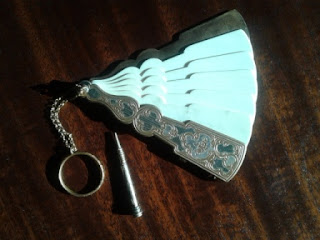We do love the grand London
ballrooms, beautiful gowns and elegant lords and ladies of Regency romances,
don’t we? But far more people in England during the early nineteenth
century lived in the countryside than in the few major cities, most often in
small villages. (The Industrial Revolution was only just starting to create the
big changes that were yet to come.)
Romance can happen in a small village just as well as in an
elegant ballroom, can’t it? What about all those popular “small town”
contemporary romances? I wanted some of those rural Regency folks to find love,
too. Welcome to Little Macclow!
The resulting tale, Lord
of Misrule, is Book Two in the series, even though I wrote it first.
Readers wanted more of Little Macclow, so for Book One, Lord of Her Heart, I went back eight months earlier and told the
story of how the village seamstress, Sally Hepston, found her soul-mate (who
isn’t an actual “lord”, by the way).
Little Macclow is full of features you would find in most
typical small villages. The people aren’t wealthy. There’s a communal village well
where the folks with no other source for water go to fetch it (and exchange
gossip, of course). Many don’t even have an oven in their little cottages, so
they depend on the village baker for bread or even cooking a roast for them!
They are very dependent on the goodwill and care provided by the local squire
and his wife who own the whole village. Little Macclow is very lucky, for
Squire Hammon and his wife Lady Anne (who everyone knows was an earl’s daughter,
so she is much revered) are benevolent, good-hearted people with a genuine
fondness for all of the villagers.
Would you like to visit Little Macclow? Dip into Books One
and Two in my Tales
of Little Macclow series. To know when new books in the series come out (and
get a free short story), please sign up for my newsletter! (or visit my website). Thanks,

















